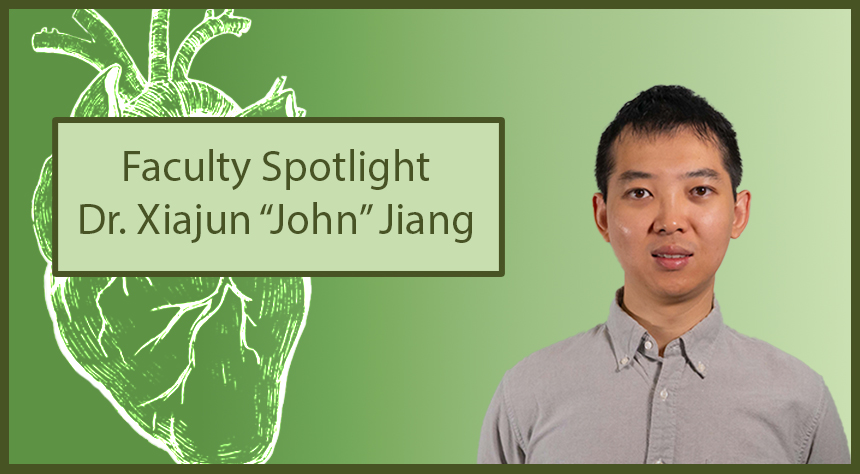Faculty Spotlight: Dr. Xiajun “John” Jiang
Faculty Spotlight: Dr. Xiajun “John” Jiang
Faculty Spotlight: Dr. Xiajun “John” Jiang
For new faculty member Dr. Jiang, computer science is a matter of the heart.
At the center of his research lies the question: how can we use artificial intelligence to heal?
The answer lies in a more human approach to machine learning. “We are losing the interpretability of the AI algorithm,” he says. “We always want to know why this works. The explanation is definitely not sufficient to someone like me.”
The grey area of a lack of clear mathematical logic has pushed Dr. Jiang towards adaptive AI. “What is exactly the human intelligence? How we can make this human intelligence computable? Then we want to develop a corresponding algorithm for that.”
He’s inspired, as of late, by his 15 month old daughter. It took her three days to learn how to climb up the stairs. It was a linear process, one step at a time. Once she had mastered one stair, it was simple to climb two or three or four, and then the whole staircase. When humans learn something, it is a one-way process. They may adapt and make small tweaks to their approach as time goes on. When it comes to massively developed large-language models, it’s more of a matter of repetitive re-training due to their structure.
What if we could create an AI model that learns the way a human does? One that takes in knowledge, improves upon it as it understands it better, and implements that knowledge clearly?
Dr. Jiang seeks to use AI in this way to solve physics-based problems, such as in simulations and analyses of the human body. “You can use these mathematical models to understand what's going on inside the heart and then to identify the pathological progress of the heart,” he explains. Just last year, he published a paper in IEEE Transactions on Medical Imaging detailing the use of such models in electrocardiographic imaging.
This semester he is teaching the Artificial Intelligence course, and through it he passes his philosophy to his students. He centers the course on AI’s history and challenges students to explore where AI succeeds and where it falls short. “Both will be helpful for us to better understand how AI can be, what's the current boundary of this AI, and where we can continue to develop. And honestly, that's the essence of research and how humans develop our knowledge, right?”
As Rowan continues to develop its health science programs, he is eager to collaborate with them. “I want to have a further chance to talk to them and see what they need and how we can collaborate, to make this AI integrated in their study and they maybe help them to better understand these medical problems.”
Any students looking to learn more about him or pursue their PhD under him can find his information at his faculty profile or his personal website.
Written by Emily Schwartz | Posted 09.29.25
